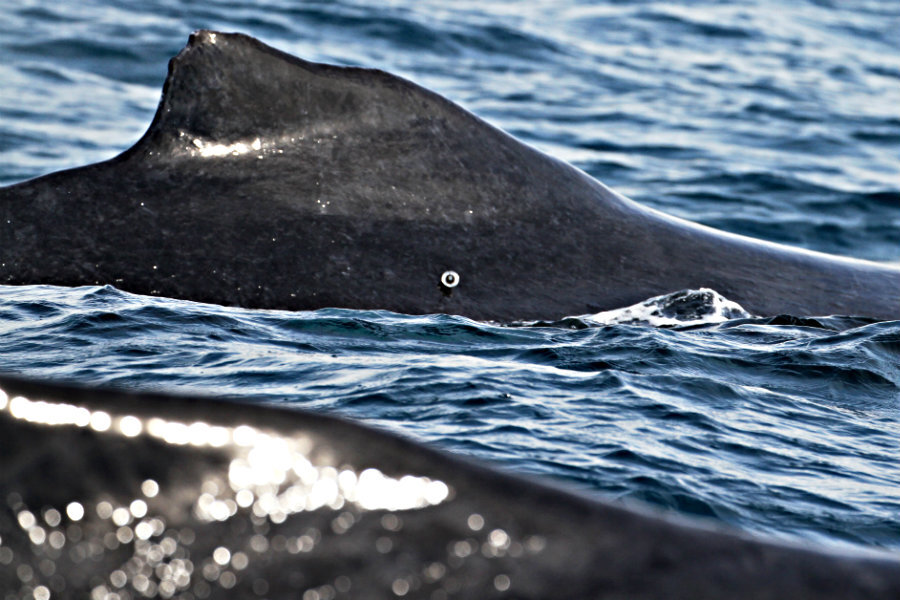Rare Omura's whale colony off Madagascar studied for the first time
Loading...
The Omura's whales of Madagascar are so rare that scientists who observed them initially thought they belonged to another species.
The New England Aquarium announced on Thursday that Dr. Salvatore Cerchio and his fellow researchers had made a record number of 80 individual sightings of the Omura’s whales off the coast of Madagascar last fall. Previously, researchers had only made 44 individual sightings total since the species was discovered.
The tropical whale species was only recognized as a distinct species in 2003, when researchers studying what they originally thought were pygmy Bryde’s whales realized that they were actually seeing a whole separate species.
“Once we realized they were Omura’s whales, it was mind boggling because first of all, no one had studied these animals,” said Dr. Cerchio in an interview with Fox News. “No one had seen them or documented them in the wild and they were not supposed to be in Madagascar. The work that we’ve done has extended their range significantly.”
For a long time, the Omura’s whale was little studied. Although researchers first discovered the Madagascar population in 2013, it was not until last fall that they were able to study them in depth.
Last fall’s sightings are by far the most contact researchers have ever had with the whale, whose lineage goes back 10 to 17 million years.
Although the whales look somewhat like Bryde’s whales, they are distinctive for their asymmetrical head pigmentation and centered head ridges.
The Omura’s whale is also unusual because as far as researchers know, it spends its entire life in a tropical environment. There is little for whales to eat in the tropics.
After observing the whales this fall, Cerchio and his team realized that the whales were feeding on tiny shrimp called euphausiids.
“The fact we are seeing them feed – and getting data on what they are feeding on,” said Cerchio, “is a great opportunity to learn about an ecosystem and how the species fits into that ecosystem.”
Omura’s whales are baleen whales, which means they filter food, such as the euphausiids, through a built-in sieve structure called baleen in their mouths. At about 33 feet long, they belong to the same group, rorquals, as the massive Blue whale (100 feet long) and the tiny Minke whale (25 feet long).
According to Cerchio, the team’s discovery of five mother-calf pairs indicates that the whales are breeding off Madagascar’s coastline. Researchers also spotted one specific whale for the third time in four years, which means that it is likely the same group of whales reside in the same area yearly.
The whales also interested researchers with their song. Last fall, Cerchio and his team captured two weeks of whale audio.
In April, they will return to the whales’ territory to collect six months of recordings from recorders they left in October.
“They sing a very simple but interesting song. It’s very rhythmic and they repeat the same vocalization for hours on end,” Cerchio told Fox News. “You have groups of animals singing in a chorus … These guys are feeding, breeding, and singing all in the same habitat.”
The team has published a paper on the Omura’s whale, and is currently seeking funding to return for research in 2016. The 2015 field expedition was funded by the US Marine Mammal Commission.
Cerchio told Fox News that it is important to be aware of populations like that of the Omura's, because they are vulnerable to natural and manmade disasters.








